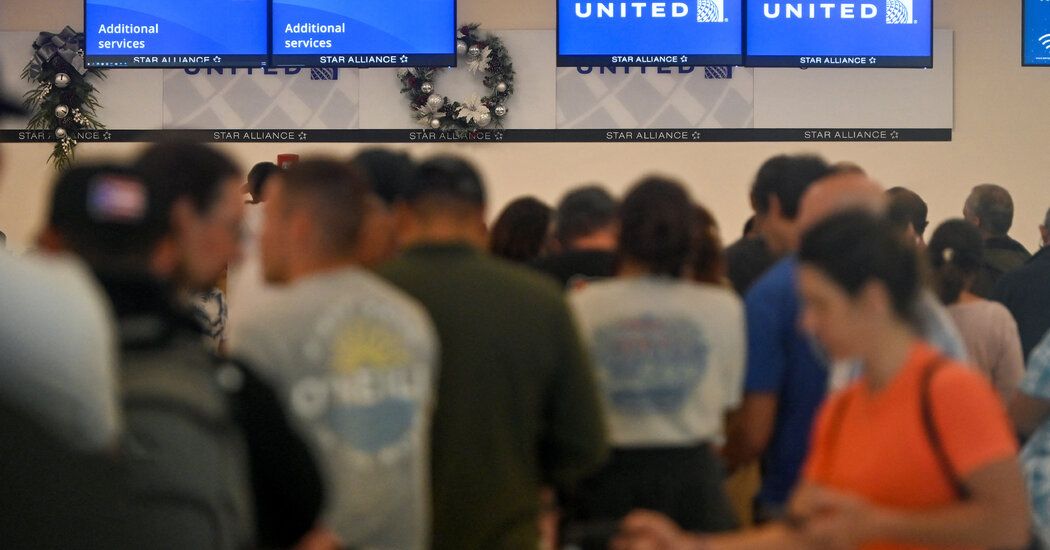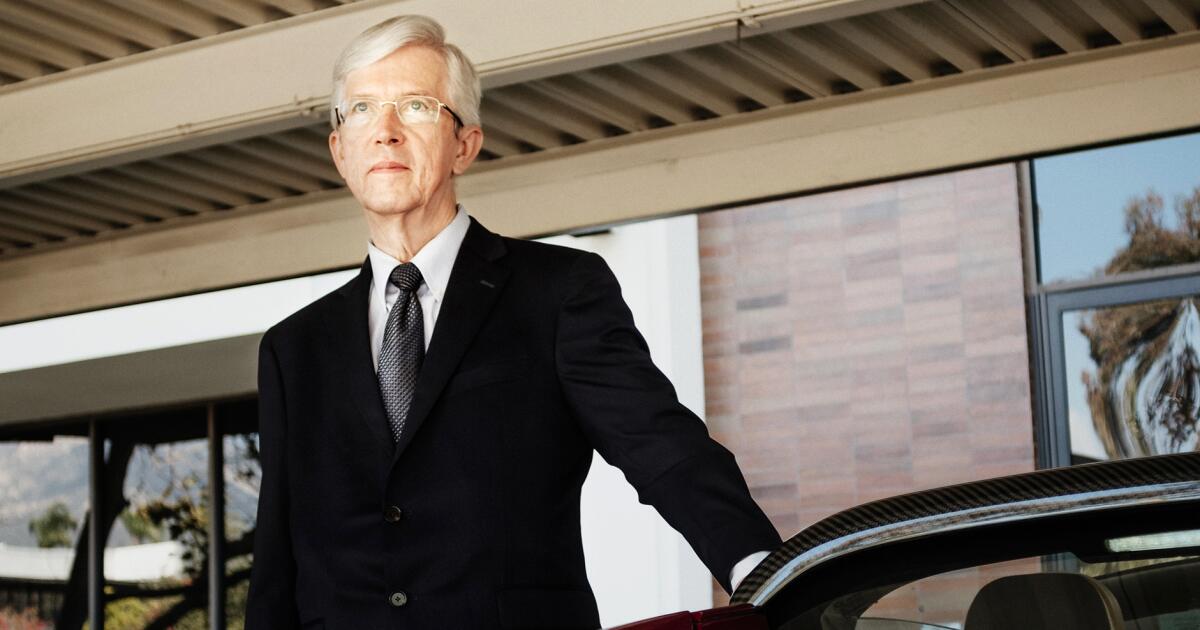A model of Boeing’s airliner, the 737 Max 9, remained grounded in the United States on Sunday as airlines awaited instructions from the plane’s manufacturer and the Federal Aviation Administration on how to inspect the planes and resume service, two days after a harrowing flight raised concerns. on the jet.
No one was seriously injured in an episode Friday night on an Alaska Airlines flight in which part of the fuselage of a Max 9 exploded in midair, exposing passengers to howling winds. The plane landed safely, but the event, on a flight from Portland, Oregon, to Ontario, California, spooked travelers and prompted an immediate call for safety inspections on Max 9 planes with similar seating configurations.
Boeing and the FAA were working to draft a message to airlines, primarily Alaska and United Airlines, with detailed instructions on how to inspect the planes, according to a person familiar with the process. Those discussions were underway Sunday and the FAA has final approval on the content of the message, as is often the case.
Meanwhile, Alaska, United and other airlines said they had parked all of their Max 9 planes, despite stating Saturday that some were considered safe to fly. Federal authorities have focused their attention on a plug in the center cabin door, which was part of the body of the plane that was torn off at an altitude of 16,000 feet on Friday and was used to fill the space where an emergency exit would be placed. if the plane were configured with more seats.
The National Transportation Safety Board, which is leading an investigation into the episode, has not identified a cause and is searching for the missing piece of the plane. The board said it would examine a wide range of possible factors, including FAA oversight, Boeing’s manufacturing process and installation or maintenance work performed on the plane.
“Everything is included, we are very broad, nothing is excluded,” board president Jennifer Homendy said at a news conference Saturday night.
The Federal Aviation Administration said Saturday that the required inspections would affect 171 Max 9 planes operated by U.S. airlines or on U.S. soil. He said the inspections should take four to eight hours by plane to complete. Airlines abroad, including Turkish Airlines and Copa Airlines in Panama, also parked Max 9 planes.
The FAA order contributed to hundreds of canceled flights over the weekend. Alaska, which has 65 Max 9 planes, said it had canceled 170 flights on Sunday due to the grounding of the Max 9, affecting about 25,000 customers. It said it expected a “significant” number of additional cancellations in the first half of the week. The airline also said it was awaiting further instructions from Boeing and the FAA regarding door plug inspections on its Max 9 planes.
Travelers took to social media to complain about long phone wait times for customer service in Alaska and inadequate compensation while waiting at the airport and facing long delays and abrupt cancellations.
United Airlines said it had canceled about 270 flights on Saturday and Sunday that it planned to fly aboard its Max 9 planes. It said it was able to preserve another 145 flights over both days by swapping other planes.
United has 79 Max 9 aircraft, more than any other airline. In a statement Sunday, the airline said it had parked all of those planes and had begun removing door panels and conducting preliminary inspections on those planes while it awaited further direction from the FAA on what inspections would be necessary for the planes to return to service. fly. .
“We continue to work with the FAA to clarify the inspection process and requirements for returning all Max 9 aircraft to service,” the airline said in a statement. “We are working with customers to rebook them on other flights and in some cases we have been able to avoid cancellations by switching to other aircraft types.”
Greg Feith, an aviation safety expert and former NTSB investigator, said this was the type of incident where “until you actually get into the investigation, you identify all the facts, conditions and circumstances of this particular event.” , you determine whether it is a specific or systemic problem.”
Meanwhile, those who make, maintain, operate and regulate the planes will be in the spotlight.
It is unclear whether Boeing is to blame for what happened to the Alaska Airlines plane, but the episode raises new questions for the manufacturer and puts additional pressure on it. Another version of the Max, a 737 Max 8, was involved in two crashes that killed hundreds of people in 2018 and 2019 and led to the global grounding of that plane.
“The question is what’s going on at Boeing,” said John Goglia, a longtime aviation safety consultant and retired member of the National Transportation Safety Board, which investigates plane crashes.
Last month, the company urged airlines to inspect the more than 1,300 Max planes delivered for a possible loose bolt in the rudder control system. Over the summer, Boeing said a key supplier had improperly drilled holes in a component that helps maintain cabin pressure. Boeing has since invested and worked more closely with that supplier, Spirit AeroSystems, to address production issues.
Spirit AeroSystems also worked on the 737 Max 9 fuselage, including manufacturing and installing the door plug that failed on the Alaska Airlines flight.
This weekend, Boeing CEO Dave Calhoun canceled a previously scheduled leadership summit for the company’s vice presidents this week and instead plans to host a company-wide livestreamed meeting on Tuesday to discuss his response. to the accident and reiterate Boeing’s commitment to “safety, quality, integrity and transparency,” he said in a message to employees.
“When it comes to the safety of our products and services, every decision and every action matters,” he said. “And when serious accidents like this occur, it is critical for us to work transparently with our customers and regulators to understand and address the causes of the event and ensure they do not happen again. This is and should be the focus of our team at this time.”
Deliveries of another Boeing plane, the twin-aisle 787 Dreamliner, were virtually stalled for more than a year, until summer 2022, as the planemaker worked with the FAA to address several quality issues, including fine gaps such as the paper on the plane plane. body.
Another defect discovered last summer once again slowed deliveries of the plane. And production of both the 737 and 787 has been slow to recover amid those and other quality and supply chain issues.
The Max was grounded in early 2019 after two crashes that killed a total of 346 people in Indonesia and Ethiopia. For 20 months, Boeing worked with regulators around the world to fix problems with the flight control software and other components of the plane.
By the time passenger flights aboard the Max resumed in late 2020, the crisis had cost the company about $20 billion.
The two medium-sized variants of the plane, the Max 8 and Max 9, have been flying since then. But the smallest, the Max 7, and the largest, the Max 10, have not yet been approved by regulators.
The Max is the best-selling airplane in Boeing history. The more than 4,500 pending orders for the plane represent more than 76 percent of Boeing’s order book. The plane is also popular with airlines: Of the nearly three million flights scheduled worldwide this month, about 5 percent will be with a Max, primarily the Max 8, according to Cirium, an aviation data provider.
“All Americans deserve a full explanation from Boeing and the FAA about what went wrong and what steps are being taken to ensure another incident does not occur in the future,” Sen. JD Vance, R-Ohio, said Saturday. , in a publication. in X.
Mark Walker and Cristina Chung contributed with reports.







